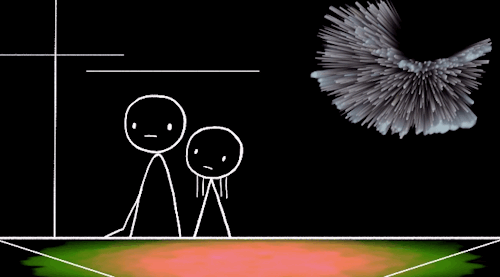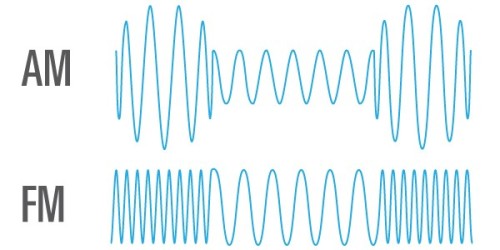"World Of Tomorrow," The New Animated Short By Don Hertzfeldt, promises To Be One Of The Best Sci-fi





"World of Tomorrow," the new animated short by Don Hertzfeldt, promises to be one of the best sci-fi movies in years — if the first trailer is any indication.
More Posts from Thekrishankumar and Others

EXCLUSIVE - Government whistleblower reveals the TRUTH behind the UFO sighting in Los Angeles on Saturday night & it’s COMPLETELY SHOCKING

You've Pasted An Image URL Into A Post. What Happens Next Will Shock You.
Copy the URL of an image you own. Paste that URL anywhere in the text of a post. Watch how that URL doesn’t even show up. Watch how — ♫ whap ♫ — your image shows up instead.

An invisibly delightful convenience. Enjoy.




Sony’s SmartWatch 3 is a study in how to make an unremarkable gadget. It’s a small puck of a screen that you can slot into a rubberized band (there’s a metal version too), and it seems meant to be as inoffensive as possible — much like the original LG G Watch. The end result is more sportwatch than smartwatch.
Five Ways Your Holidays Might Be Similar to the Crew on the Space Station
The holiday season is here! You might think that your celebrations are WAY different than what is done on the International Space Station, but you might be surprised…Here are a few ways your holidays might be similar to the crew on the space station:
1. You’re Instagramming All Your Decorations

Yep! Just like on Earth, the space station crew has the capability to use social media while on orbit. If you don’t follow them, you should check it out and get an out of this world perspective of what life is like on the International Space Station. (Expedition 34 crew members assemble in the Unity node of the space station for a brief celebration of the Christmas holiday on Dec. 24, 2012.)
2. You Have to Make Sure to Call Your Relatives

You don’t want to forget to wish Aunt Sue “Happy Holidays”, she might not send you a gift next year! The crew on the space station have the ability to talk to their loved ones every day. (Cosmonaut Mikhail Tyurin, and astronauts Michael E. Lopez-Alegria and Sunita L. Williams conduct a teleconference on Dec. 25, 2006.)
3. The Family Photos Never Seem to End

The crew on the station might not be related by blood, or even country of birth, but they share living space, meals and time together just like a family on Earth. And when it comes to the holidays, you bet they’ll be snapping pictures to capture the moments. (The six Expedition 30 crew members assemble in the U.S. Lab aboard the space station for a brief celebration of the Christmas holiday on Dec. 25, 2011.)
4. Meal Prep is a Task Shared by All

When you’re making food for multiple people, everyone needs to pitch in and help…the crew on the space station included! (Astronauts Michael Fincke, Sandra Magnus and cosmonaut Yury Lonchakov, pose for a photo as they prepare to share a Christmas meal on the space station on Dec. 25, 2008.)
5. Eating Cookies is a Must

What would the holidays be like without eating cookies? They even have the chance to eat them in space…pretty cool! (Astronauts Michael Fincke and Sandra Magnus hold Christmas cookies while posing for a photo near the galley on the space station on Dec. 25, 2008.)
For more pictures from the holidays on the International Space Station, check out our Flickr album: HERE.
Make sure to follow us on Tumblr for your regular dose of space: http://nasa.tumblr.com













"Google Glass" takes on a whole new meaning with the rendering for Google’s futuristic new headquarters.

Ive still been a bit busy lately, but heres todays a little late but here

AM & FM: How Radio Works
Lately I’ve been thinking about how the things I use every day actually work, and since I listen to a lot of podcasts, you can guess where this post is going: radio.
In a studio, a microphone converts sound waves from a person’s voice into an electronic audio signal. If this was sent out by itself, it would only travel a few metres in air before it faded out. To get radio waves to travel long kilometres to a receiver, we have to combine it with a “carrier wave”—an electromagnetic wave.
Electromagnetic waves are made up of oscillating electric and magnetic fields, just like visible light, but radio waves are right down on the lower end of the spectrum, so their wavelengths are very long—around 300 metres.

(Image Credit: NASA)
Sound information is combined with the wave by altering or modulating the wave’s properties, like changing its amplitude, frequency, or phase. There are two ways to combine the audio signal with the carrier wave: amplitude modulation (AM) or frequency modulation (FM).
AM radio changes the overall amplitude or strength of the wave, varying its height in order to incorporate the sound information. FM radio works a little differently, because it changes the frequency of the wave rather than the amplitude. The frequency is the number of wavelengths that pass by a given point per second—physically, a high frequency wave would look squashed up, and a low frequency wave would look stretched out.

(Image Credit: Wikimedia Commons)
Both kinds of waves are susceptible to variations in amplitude as they zoom off through the air, but since FM radio relies on changes in frequency rather than amplitude, these variations don’t matter—they can just be ignored, and so the sound quality is usually super clear. But AM radio relies on the amplitude to convey information, so when the amplitude is varied a bit, this results in interference or static, which will be a familiar idea if you’ve ever listened to AM radio on a rural country road. The upside of AM radio is that it travels much further than FM radio, which is probably why you’re listening to it on that rural country road in the first place.
So once these radio waves—whether AM or FM—hit a radio receiver, their oscillating fields induce a current in the conductor. The sound information encoded into the waves can be extracted, and converted back to sound waves to grace your ears with your favourite music or talk show.
(Bonus: if you want to use science to learn more cool science, my fave podcasts are Radiolab, the Infinite Monkey Cage, and Big Picture Science.)
-
 cxzzxc6713-blog liked this · 6 years ago
cxzzxc6713-blog liked this · 6 years ago -
 dto6arteautonomo liked this · 6 years ago
dto6arteautonomo liked this · 6 years ago -
 bronzefirebird liked this · 9 years ago
bronzefirebird liked this · 9 years ago -
 gianellamaria liked this · 9 years ago
gianellamaria liked this · 9 years ago -
 beingbuscemi liked this · 10 years ago
beingbuscemi liked this · 10 years ago -
 robotrightsactivist reblogged this · 10 years ago
robotrightsactivist reblogged this · 10 years ago -
 echnolon reblogged this · 10 years ago
echnolon reblogged this · 10 years ago -
 maegane liked this · 10 years ago
maegane liked this · 10 years ago -
 teamfreewill23 liked this · 10 years ago
teamfreewill23 liked this · 10 years ago -
 captain-eronab reblogged this · 10 years ago
captain-eronab reblogged this · 10 years ago -
 c0wboyswag reblogged this · 10 years ago
c0wboyswag reblogged this · 10 years ago -
 tumblrstumblebuttheydontfalldown liked this · 10 years ago
tumblrstumblebuttheydontfalldown liked this · 10 years ago -
 andthentherewasfire liked this · 10 years ago
andthentherewasfire liked this · 10 years ago -
 deathrayglare reblogged this · 10 years ago
deathrayglare reblogged this · 10 years ago -
 muhus liked this · 10 years ago
muhus liked this · 10 years ago -
 moonicagil-blog liked this · 10 years ago
moonicagil-blog liked this · 10 years ago -
 goldsquirrel-blog reblogged this · 10 years ago
goldsquirrel-blog reblogged this · 10 years ago -
 nikolasfuturist reblogged this · 10 years ago
nikolasfuturist reblogged this · 10 years ago -
 raj1105 liked this · 10 years ago
raj1105 liked this · 10 years ago -
 hetket reblogged this · 10 years ago
hetket reblogged this · 10 years ago -
 hetket liked this · 10 years ago
hetket liked this · 10 years ago -
 squili1203 liked this · 10 years ago
squili1203 liked this · 10 years ago -
 loverthehater liked this · 10 years ago
loverthehater liked this · 10 years ago -
 strangeite reblogged this · 10 years ago
strangeite reblogged this · 10 years ago -
 romdocitizen reblogged this · 10 years ago
romdocitizen reblogged this · 10 years ago -
 rogeliocabello liked this · 10 years ago
rogeliocabello liked this · 10 years ago -
 offbasepro liked this · 10 years ago
offbasepro liked this · 10 years ago -
 tamamen reblogged this · 10 years ago
tamamen reblogged this · 10 years ago -
 proctoruniversity-blog liked this · 10 years ago
proctoruniversity-blog liked this · 10 years ago -
 notnixon liked this · 10 years ago
notnixon liked this · 10 years ago -
 yesdavidperlmutterfan liked this · 10 years ago
yesdavidperlmutterfan liked this · 10 years ago -
 sethjacob reblogged this · 10 years ago
sethjacob reblogged this · 10 years ago -
 funkya77 liked this · 10 years ago
funkya77 liked this · 10 years ago -
 mountainsbeyond liked this · 10 years ago
mountainsbeyond liked this · 10 years ago -
 frankyj24 liked this · 10 years ago
frankyj24 liked this · 10 years ago -
 kahvelikutteri liked this · 10 years ago
kahvelikutteri liked this · 10 years ago -
 the-film-maniac liked this · 10 years ago
the-film-maniac liked this · 10 years ago
16, I love Technology & Science Stuff . krishan@krishankumar.me
82 posts